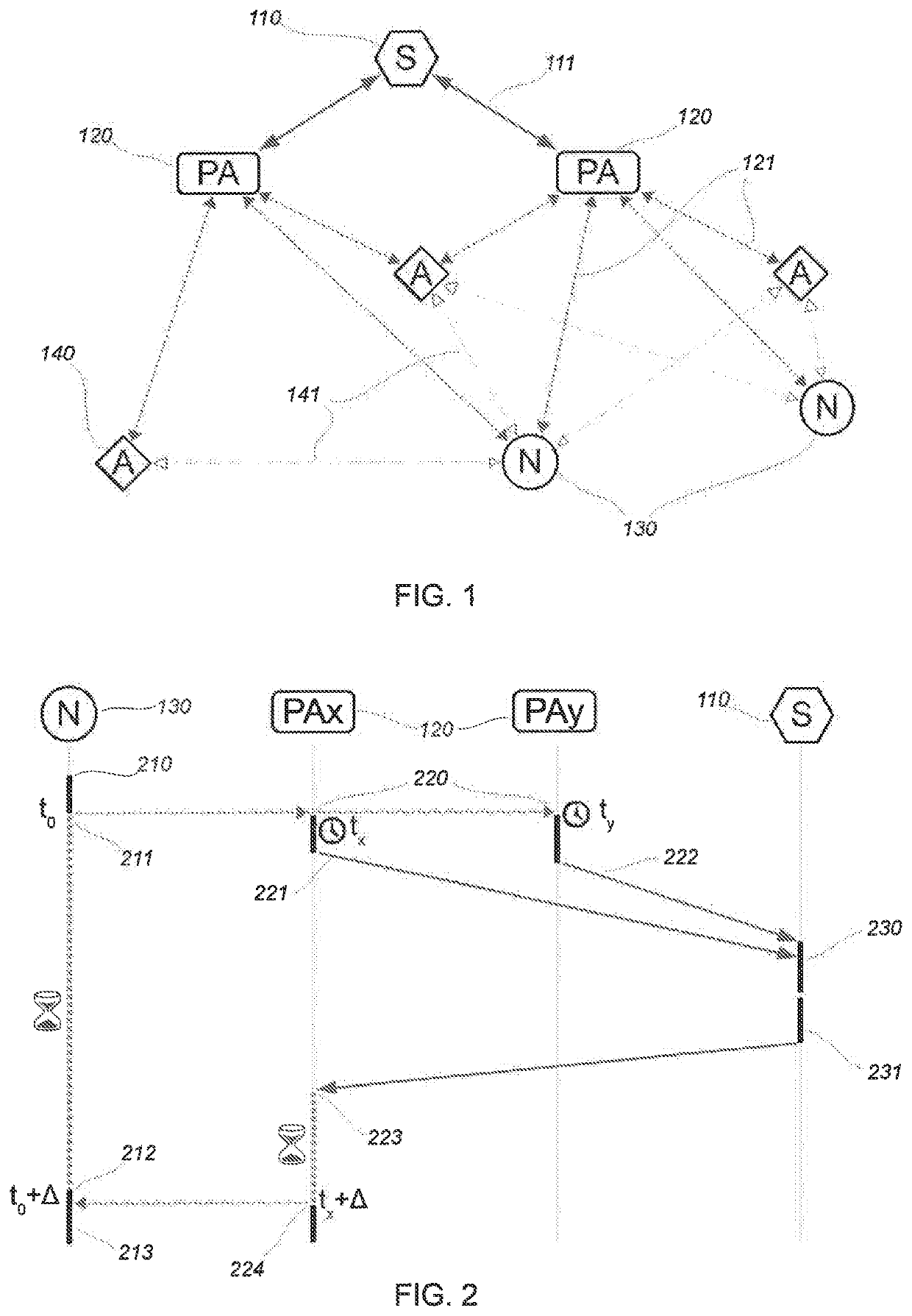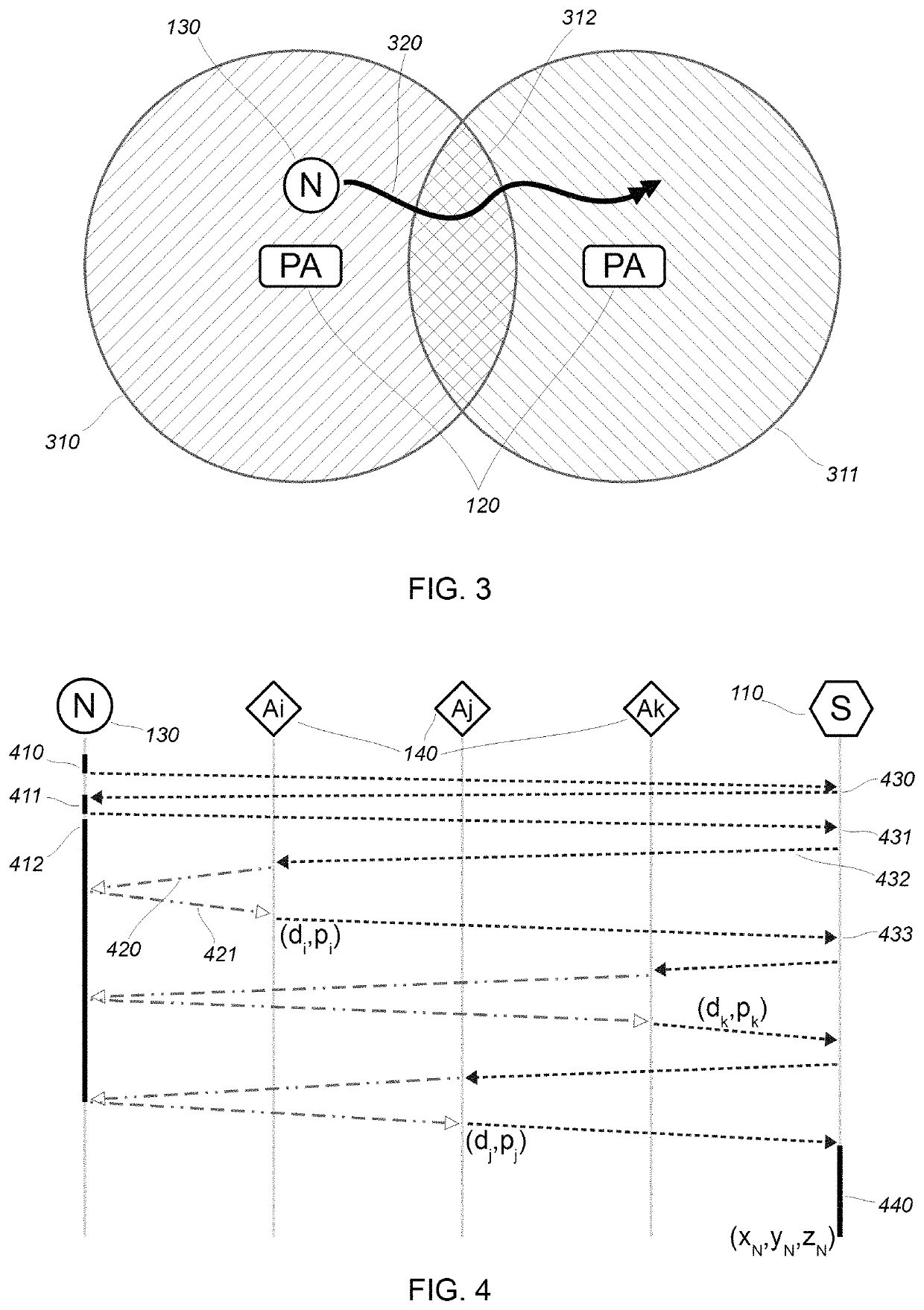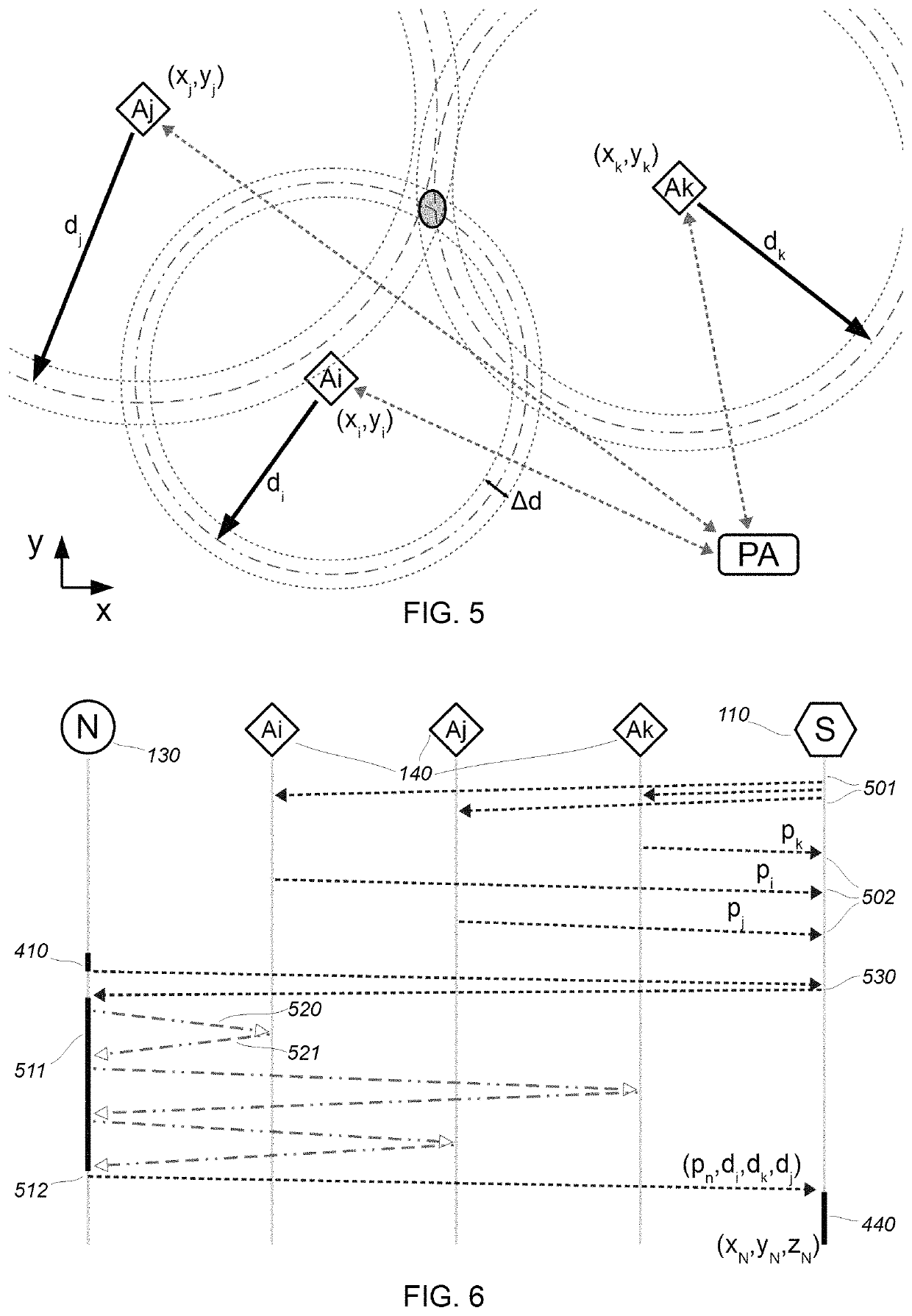Wireless computer network and method for locating a node in said network
a wireless computer network and node technology, applied in the field of wireless telecommunications and computer networks, can solve the problems of inability to predict the network, the deployment of robust but complex access points, and the deployment of expensive access points, so as to reduce the constraints of reliability, reduce the energy consumption of nodes, and reduce the effect of energy consumption
- Summary
- Abstract
- Description
- Claims
- Application Information
AI Technical Summary
Benefits of technology
Problems solved by technology
Method used
Image
Examples
Embodiment Construction
[0057]In the embodiment to follow, only a minimum number of each one of the elements comprising the invention are shown: a single node, at least one and preferably at least two access points, at least three anchors and a server. In a typically deployed system, the number of nodes would be substantially higher (by a dozen to several dozen thousand), with up to a hundred or so access points, and a dozen to a thousand anchors.
[0058]FIG. 1 shows all of the elements of a wireless radio network in accordance with the invention and the type of communication that they can exchange.
[0059]The server (110) constitutes the core of the network, it is a generic computer running a piece of software or a set of software specific to the wireless network of the invention. It is connected to a multitude of access points (120) by Internet / intranet data connections (111) which are typically wired links (of the Ethernet, ADSL, etc. type), wireless (type Wifi, GPRS or LTE cellular) or a combination of the...
PUM
 Login to View More
Login to View More Abstract
Description
Claims
Application Information
 Login to View More
Login to View More - R&D
- Intellectual Property
- Life Sciences
- Materials
- Tech Scout
- Unparalleled Data Quality
- Higher Quality Content
- 60% Fewer Hallucinations
Browse by: Latest US Patents, China's latest patents, Technical Efficacy Thesaurus, Application Domain, Technology Topic, Popular Technical Reports.
© 2025 PatSnap. All rights reserved.Legal|Privacy policy|Modern Slavery Act Transparency Statement|Sitemap|About US| Contact US: help@patsnap.com



